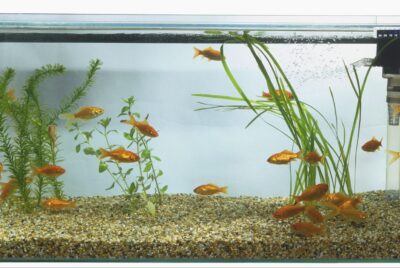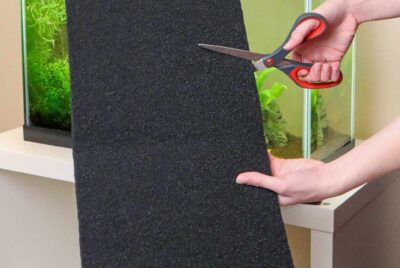How to Change Aquarium Filter Without Losing Bacteria
“How to Change Aquarium Filter Without Losing Bacteria? “As a fish enthusiast, I understand the concerns you may have when it comes to changing your aquarium filter. The beneficial bacteria present in the filter media are essential for maintaining a healthy nitrogen cycle, converting toxic ammonia into less harmful compounds. It is crucial to handle the filter replacement process with care to prevent a disruption in the delicate balance of your aquarium.
Understanding the Role of Beneficial Bacteria
Before delving into the process of changing the aquarium filter, it is vital to understand the role of beneficial bacteria. These bacteria colonize the filter media and provide biological filtration, which is essential for breaking down toxic waste in the aquarium. The conversion of ammonia to nitrite and then to nitrate is facilitated by these bacteria, creating a safe environment for your fish.
Why Change the Aquarium Filter?
Over time, the filter media accumulates debris, organic matter, and waste products. This buildup can hinder the filtration process and decrease the filter’s efficiency. Regular filter changes ensure proper filtration, maintaining water quality and clarity. However, changing the filter incorrectly can disrupt the beneficial bacteria colonies, causing ammonia spikes and compromising the health of your fish.
Choosing the Right Replacement Filter Media
When selecting a replacement filter media, it is essential to choose a product that is compatible with your existing filter system. There are various types of filter media available, including mechanical, biological, and chemical filtration options. For maintaining the beneficial bacteria, it is crucial to focus on preserving the biological filtration aspect. Look for filter media that has a high surface area for bacterial colonization and provides ample space for beneficial bacteria to thrive.
Preparing for the Filter Change – (How to Change Aquarium Filter Without Losing Bacteria)
Before embarking on the filter change process, it is essential to gather the necessary supplies. You will need a replacement filter media, a clean container to hold aquarium water, dechlorinator (if needed), and an aquarium-safe net or siphon.
Step-by-Step Guide to Changing the Filter
Now let’s dive into the step-by-step process of changing the filter while ensuring the preservation of beneficial bacteria.
Step 1: Gather the Necessary Supplies
Ensure you have all the required supplies within reach to avoid interruptions during the filter change process.
Step 2: Turn Off the Aquarium Equipment
Before removing the old filter, it is crucial to turn off all aquarium equipment, including the heater, filter, and lights. This prevents any accidents or damage while working on the filter.
Step 3: Remove the Old Filter – (How to Change Aquarium Filter Without Losing Bacteria)
Carefully remove the old filter, taking care not to disturb the filter media excessively. Place it in the clean container with aquarium water to keep it moist and prevent beneficial bacteria from drying out.
Step 4: Handle the Beneficial Bacteria with Care
The filter media houses colonies of beneficial bacteria, which are essential for maintaining water quality. Avoid rinsing the filter media with tap water, as chlorine or chloramine present in tap water can harm the bacteria. Handle the filter media gently to prevent dislodging the beneficial bacteria.
Step 5: Install the New Filter Media – (How to Change Aquarium Filter Without Losing Bacteria)
Replace the old filter media with the new one, ensuring it fits properly within the filter compartment. Follow the manufacturer’s instructions for installation, and make sure the water flow is unobstructed.
Step 6: Restart the Equipment and Monitor the Water
Turn on the aquarium equipment and allow the filter to run for a few minutes. Monitor the water parameters closely in the following days to ensure stability and observe any changes that may require further action.
Tips to Maintain Beneficial Bacteria Levels During Filter Changes
To further assist you in maintaining the beneficial bacteria levels during filter changes, consider implementing the following tips:
Tip 1: Partially Clean the Filter Media
During routine maintenance, you can gently rinse the filter media in aquarium water to remove excess debris without completely disrupting the beneficial bacteria colonies. Be cautious not to remove or rinse too much, as it may disturb the established bacteria.
Tip 2: Gradually Replace Filter Media
When introducing new filter media, it is advisable to do so gradually. This allows the beneficial bacteria to colonize the new media while maintaining a stable nitrogen cycle. Introduce a portion of the new media alongside the existing one and increase the proportion gradually over a few weeks.
Tip 3: Seed the New Filter Media
To expedite the establishment of beneficial bacteria on new filter media, you can “seed” it with a small amount of established filter media. Place a section of the old media in close proximity to the new media, allowing the bacteria to colonize the new material more rapidly.
Tip 4: Avoid Overcleaning the Filter
While it is essential to keep the filter clean, overcleaning can disrupt the beneficial bacteria colonies. Stick to a regular maintenance schedule and avoid excessive cleaning that may harm the established bacterial population.
Tip 5: Monitor Water Parameters
Regularly test the water parameters, especially ammonia and nitrite levels, after a filter change. This will help you identify any imbalances and take appropriate action if necessary, ensuring the well-being of your fish.
Common Mistakes to Avoid – (How to Change Aquarium Filter Without Losing Bacteria)
To ensure a successful filter change without losing beneficial bacteria, steer clear of the following common mistakes:
Mistake 1: Changing the Entire Filter at Once
Replacing the entire filter at once can lead to a significant disruption in the nitrogen cycle and cause ammonia spikes. It is advisable to change the filter media gradually to maintain the bacterial colonies.
Mistake 2: Rinsing Filter Media with Tap Water
Tap water often contains chlorine or chloramine, which can harm beneficial bacteria. Avoid rinsing the filter media with tap water and use aquarium water instead.
Mistake 3: Using Chemicals to Speed Up the Cycling Process
Introducing chemicals or additives to speed up the cycling process can disrupt the natural balance and harm the beneficial bacteria. Allow the aquarium to establish its biological filtration naturally over time.
Conclusion – (How to Change Aquarium Filter Without Losing Bacteria)
Changing your aquarium filter without losing beneficial bacteria is a crucial aspect of maintaining a healthy aquatic environment. By following the step-by-step guide outlined in this article and implementing the tips provided, you can successfully replace the filter while preserving the essential bacterial colonies. Remember to handle the filter media with care, gradually introduce new media, and monitor water parameters closely to ensure the well-being of your fish.
Frequently Asked Questions – (How to Change Aquarium Filter Without Losing Bacteria)
Q: How often should I change my aquarium filter?
A: The frequency of filter changes depends on several factors, including the size of your aquarium, the number of fish, and the type of filtration system. As a general guideline, it is recommended to change or clean mechanical filter media every 2-4 weeks, while biological media should be preserved and maintained.
Q: Can I clean the filter media using tap water?
A: No, it is not advisable to clean the filter media with tap water. Tap water often contains chlorine or chloramine, which can harm beneficial bacteria. Rinse the media with aquarium water instead.
Q: Should I replace the entire filter cartridge during a filter change?
A: It is not necessary to replace the entire filter cartridge. Instead, focus on replacing or cleaning the specific filter media responsible for mechanical or chemical filtration while preserving the beneficial bacteria.
Q: What should I do if I accidentally disturb the beneficial bacteria colonies during a filter change?
A: If the beneficial bacteria colonies are disturbed, closely monitor the water parameters for signs of ammonia or nitrite spikes. Perform partial water changes as needed and consider using bacterial supplements to help re-establish the bacterial colonies.
Q: Can I add new fish immediately after changing the filter?
A: It is generally recommended to wait for a few days after changing the filter before introducing new fish. This allows time for the water parameters to stabilize and the beneficial bacteria to reestablish their colonies.




